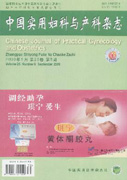|
Standardization of clinical research related to cervical cancer.
QU Qing-xi,ZHANG Shi-qian
2021, 37(1):
59-63.
DOI: 10.19538/j.fk2021010115
In this report,we reviewed the current situation and problems of clinical diagnosis and treatment of cervical cancer. We proposed that clinical research is the driving force to lead the development of medicine through the example of LACC research and KEYNOTE-158 study.We then analyzed the tortuous process of standardization of clinical research in China. In last,we discussed the prospect that gynecological oncologists advocated original,standard clinical research of cervical cancer in line with national conditions in China.
|

